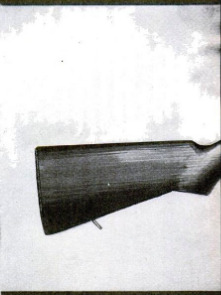-
Title (Dublin Core)
-
He invented the world's deadliest rifle
-
Article Title and/or Image Caption (Dublin Core)
-
He invented the world's deadliest rifle
-
extracted text (Extract Text)
-
THE United States Government is lay-
ing a $15,000,000 bet that the new Gar-
and semiautomatic rifle is the deadliest
firearm ever invented. At the great,
sprawling Springfield, Mass, Armory orig-
inally established by George Washington,
Garand guns by the thousands are whizzing
off the production lines, while outside,
swarms of workmen rush through the con-
struction of a vast addition to the plant.
Reams of publicity have carried the news
of this rifle to practically every wide-awake
U. S. citizen. But what about the man be-
hind this particular gun? Who is this Gar-
and, and what is he like? How did he hap-
pen to invent the weapon that will make
every American doughboy a one-man ma-
chine-gun nest?
Alert, athletic, square-jawed—that was
my first impression of John C. Garand when
I walked into his Springfield Armory office
a few weeks ago. As you talk to him, you
notice that he pronounces certain words
with a soft French-Canadian accent—a relic
of his earliest years on the farm where he
was born, twenty miles from Montreal. He
was seventh in a family of fourteen chil-
dren. His mother died before
he was eight years old and
the family moved south to
Jewett City, Conn. Here, at
twelve, an age when most
children are still in grade
school, young Garand started
work as a floor sweeper and
bobbin boy in a New England
textile mill.
Machinery had always at-
tracted him. Even today,
Garand’s idea of an exciting
night's reading is to settle
down in an armchair with a
pile of machine-shop maga-
zines beside him. During the
short rest periods, while the
bobbins were filling up, the
boy used to haunt the end of
the plant where the textile
mechanisms were repaired.
The foreman noticed him,
took a liking to him, and let
him pick up extra pennies
scouring down rough places
on spindles with a piece of
building brick. A year after
he came to the mill, Garand
was a boy inventor with a
patent of his own. He had
designed a new type of jack
screw.
As soon as he began mak-
ing money, Garand started
saving toward a rifle. With |
one of his brothers, he used
to spend evening after eve-
ning poring over the gun.
pages of a mail-order cata-
logue, debating the merits of
the different firearms. Final-
ly, the boys pooled their re-
sources and sent off a money
order for a Winchester .32-20.
When it arrived, with a blue,
shiny barrel and smelling of
fine oil, they discovered it
had such a range that they
couldn’t shoot it without en-
dangering cattle and farmers
for miles around.
It was Garand's fertile
brain that solved the diffi-
culty. Obtaining a bent heavy
metal pipe, the boys lugged
it to a little hillock in the
middle of a field. There they
propped it up so that one end
formed a bull's-eye and the |
other pointed skyward. At
200 yards, the boys drove
their bullets into the open
mouth of the pipe. The right-
angle curve sent the lead
streaking toward the strato-
sphere. However, its ear-
splitting “zing!” resounded
over the countryside and
farmers, who were convinced
a bullet had just missed their
ears, came dashing up in bug-
gies to register emphatic
complaints. It usually took a
long argument and a couple
of demonstrations before they
were satisfied.
By the time he was eight-
een, Garand was a full-
fledged machinist at the tex-
tile mill. As a side line, one
summer, he and his brother
ran a shooting gallery at
Norwich, Conn. That was a
lot like a boy with a sweet
tooth managing a candy
store. Their enthusiasm for
target practice ate up most
of the profits.
Not long afterwards, young
Garand landed a job in a
Rhode Island tool factory and
moved to Providence. There
the speed bug bit him and
he took up motor-cycle rac-
ing. An engine of his own de-
sign carried him to victory at
various New England tracks.
Less dangerous, but still giv-
ing the thrill of speed and
balance, was his next interest
—fancy skating on ice. That
occupied his leisure for sev-
eral winters. He would still
like to whirl and spin on skates, but he
doesn’t have time to practice. In spite of |
such varied hobbies, he always kept coming
back to firearms. They formed the center
of his interest, :
In the early days of the World War, Gar- |
and came to New York, working in a microm- |
eter plant in lower Manhattan. Saturdays |
invariably found him alighting from the
subway at Coney Island with a target shoot-
er’s light in his eye. He was star patron of
all the galleries along the boardwalk. Wages
were good, and he shot to his heart’s con-
tent. When he moved from one gallery to
another, a queue of onlookers trailed be-
hind. One Saturday, when he was finding
out about rifles by using Coney Island as a
laboratory, he shot at every target there.
By nightfall, he had set an all-time high for
himself, not only in score but in expense as
well. He had spent $100 at the galleries in
a single day!
Luckily for his bank balance, he discov-
ered a gallery near Times Square, about this
time, where the proprietor would let him |
shoot free. Firing a rifle from the hip so ac-
curately that he could hit a swinging target
seven times on a single swing, he always
attracted a crowd that overflowed onto
the sidewalk and kept the cash register
ringing’ at the gun counter.
During this period, when Garand was rune
ning the World War a close second in boom-
ing the stock of ammunition makers, he
was taking correspondence courses, study-
ing nights to complete a formal education
that had stopped when he was twelve. One
evening, before he sat down to his lessons,
he read in a newspaper that the Government.
was having difficulty finding a satisfactory
machine gun. He couldn't see why there
should be any problem about that, so he sat
down and designed a machine gun of his
own. Folding up his drawings, he slipped
them in an envelope and addressed it to the
Naval Board, in Washington, D. C.
That act switched Garand onto the main
track of his life work. It gave point and di-
rection to his consuming interest in guns,
In due time, a letter came back from the
Naval Board. The experts were sufficiently
interested in his drawings to invite him to
come to Washington for a conference. The
upshot of that
meeting was an offer to turn Garand loose
in a room at the Bureau of Standards and
let him prepare a working model of his gun.
The salary was just half what he was receiv-
ing as a skilled machinist. But he jumped at
the chance.
For eighteen months, Garand buried him-
self in the room set aside for him. At the
end of that time, his gun was finished. But
so was the World War, and the demand for
machine guns was at a standstill. However,
the U. S. Army had become interested in
developing a light, semiautomatic rifle, a
sort of compromise between a machine gun
and a Springfield rifle. Garand moved to
the Armory in Massachusetts and tackled
the job.
That was twenty-one years ago. Ever
since, the struggle to make this radically
new weapon simple enough, strong enough,
and light enough, has continued. These
three problems were in the back of Garand's
mind night and day—when he was work-
ing, lying in bed, playing table tennis or bad-
minton or horseshoes. Often he came down
to the Armory on week-ends and in the quiet
of the great brick buildings wrestled with
the toughest riddle of all, cutting weight to
a minimum.
There were many times when Garand
was positive the weight requirement set by
the Army could never be reached. Eventual-
ly, by saving an ounce here and an ounce
there, without sacrificing strength, he at-
tained the goal. Most of the weight elim-
ination was accomplished by reducing the
number of parts. For example, one spring
in the hammer mechanism now does the
work that originally required five springs.
That mechanical short cut, alone, clipped a
whole pound from the weight of the gun.
Gas pressure produced by the discharge of
the cartridge automatically ejects the shell
and cocks the gun, so all the operator has
to do is pull the trigger. In other words,
Garand has put the “kick” to work and by
so doing has given American soldiers the
best high-speed firearm on earth.
Along the road to this goal, model after
model was designed and worked out with
infinite care, only to be rejected after gruel-
ing tests. Nearly a dozen kinds of gun steel
were tried, and the rear sight alone was re-
designed fifty times. The present Garand gun
combines the best features of half a dozen
discarded designs. All during these years,
other inventors were bringing forth ideas in
competition with the rifle Garand was mak-
ing. His weapon won out over approximate-
ly fifty different models which were sug-
gested or submitted to Army experts.
In those last hectic days when the Arm-
ory was rushing through a batch of the new
guns for large-scale tests, the workmen
labored in two shifts, night and day. Gar-
and worked both shifts, sleeping when he
could. Then came the most strenuous tests
ordnance experts could devise. The gun was
fired almost continuously, far beyond the
limits of ordinary use. It was soaked in
water and thrown in mud. It was even
placed in a sand-blast machine for hours to
see if any of the quartz grains would pene-
trate the mechanism. The rifle passed these
torture tests with flying colors.
Garand has turned down tempting offers
from a commercial company and a foreign
government in order to give the United
States exclusive rights to manufacture his
rifle, For the price of one destroyer, the
whole U. S. Army can be equipped with
the superguns.
This, then, is the story of the man be-
hind the Garand rifle—the story of a former
motor-cycle racer, crack shot, boy inventor,
and toolmaker who, without benefit of a
formal education or an engineering degree,
made firearms history. His two decades of
concentrated application have produced a
weapon which promises to be of outstand-
ing importance in American defense.
-
Contributor (Dublin Core)
-
Edwin Teale (article writer)
-
John J. Garand (inventor)
-
Language (Dublin Core)
-
eng
-
Date Issued (Dublin Core)
-
1940-12
-
pages (Bibliographic Ontology)
-
68-71, 235-236
-
Rights (Dublin Core)
-
Public domain
-
Archived by (Dublin Core)
-
Sami Akbiyik
-
Marco Bortolami (editor)
 Popular Science Monthly, v. 137, n. 6, 1940
Popular Science Monthly, v. 137, n. 6, 1940
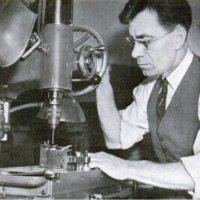 Ekran Resmi 2022-02-02 11.15.01.png
Ekran Resmi 2022-02-02 11.15.01.png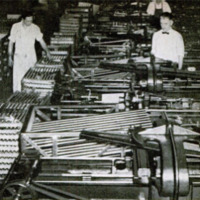 Ekran Resmi 2022-02-02 11.15.08.png
Ekran Resmi 2022-02-02 11.15.08.png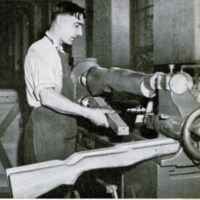 Ekran Resmi 2022-02-02 11.15.14.png
Ekran Resmi 2022-02-02 11.15.14.png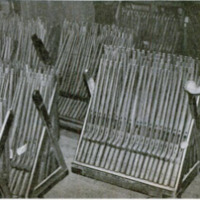 Ekran Resmi 2022-02-02 11.15.21.png
Ekran Resmi 2022-02-02 11.15.21.png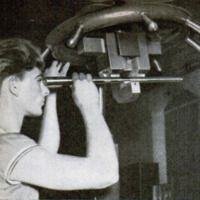 Ekran Resmi 2022-02-02 11.15.26.png
Ekran Resmi 2022-02-02 11.15.26.png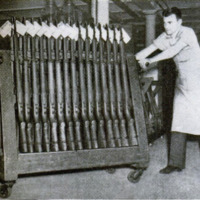 Ekran Resmi 2022-02-02 11.15.32.png
Ekran Resmi 2022-02-02 11.15.32.png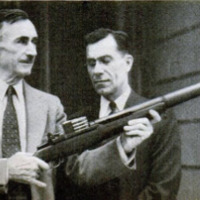 Ekran Resmi 2022-02-02 11.15.39.png
Ekran Resmi 2022-02-02 11.15.39.png Ekran Resmi 2022-02-02 11.15.44.png
Ekran Resmi 2022-02-02 11.15.44.png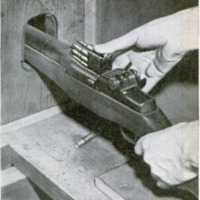 Ekran Resmi 2022-02-02 11.15.51.png
Ekran Resmi 2022-02-02 11.15.51.png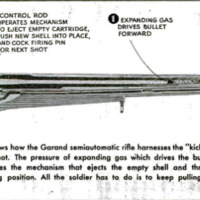 Ekran Resmi 2022-02-02 11.15.57.png
Ekran Resmi 2022-02-02 11.15.57.png







